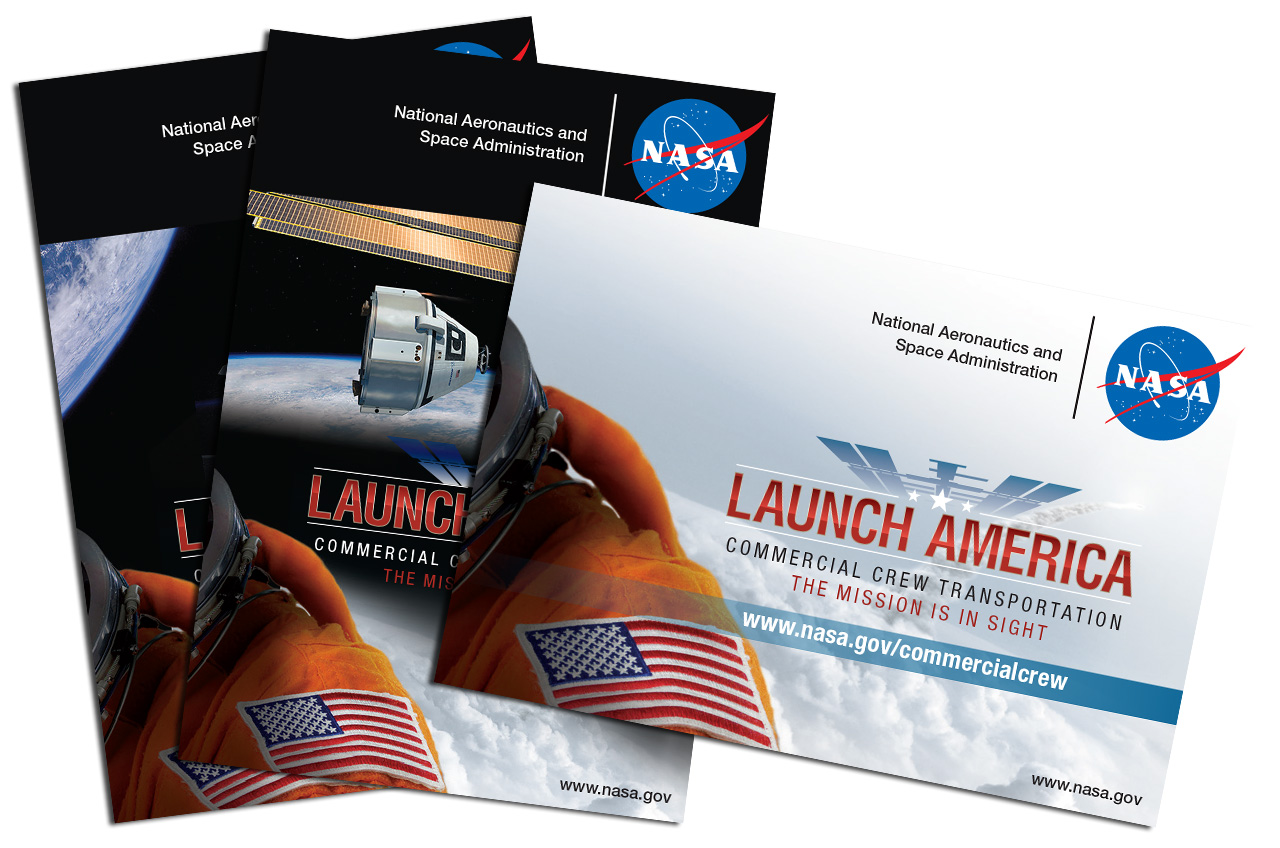Trade You a Dragon? NASA's Private Crew Capsules Now Collectible Cards

NASA's newly-drafted picks for its private spacecraft team now have their own rookie cards.
The agency this week debuted "collectible cards" featuring the space capsules it chose on Sept. 16 to fly astronauts to and from the International Space Station.
"We have quick-reference collectible cards with highlights of Boeing's CST-100, SpaceX's Crew Dragonand NASA's Commercial Crew Program that you can print and share with your friends," NASA's website promotes.
The three-card set, which the space agency is offering as free downloadable PDFs, include the "Launch America" art that was revealed during the announcement of $6.8 billion in awards to The Boeing Company and Space Exploration Technologies (SpaceX) to certify their capsules for crewed flights to the space station. [SpaceX's Manned Dragon Spaceship in Pictures]
"Our goal is to complete certification of the [commercial] crew transportation systems in 2017," NASA's site reads, "including a test flight to the space station with one NASA astronaut aboard – to meet NASA's vital crew rotation and lifeboat services needs."
"By flying four astronauts to the orbiting laboratory at a time, CST-100 and Crew Dragon enable NASA to increase the number of crew members on the station, doubling the amount of scientific research that can be performed on the one-of-a-kind facility as it orbits 250 miles above Earth."
Each of the spacecraft cards features an artist's rendering of one of the companies' capsules nearing a docking to the space station, as well as the United States flag patch — as sewn to the shoulder of an astronaut's spacesuit — as is central to the design of the set's third card.
Get the Space.com Newsletter
Breaking space news, the latest updates on rocket launches, skywatching events and more!
Like the back of baseball cards listing players' stats, the reverse side of NASA's two spacecraft cards lists the key facts about the Boeing CST-100 and SpaceX Dragon.
The cards identify the type of rocket that each capsule will launch atop (United Launch Alliance Atlas V and SpaceX's Falcon 9 v.1.1, respectively), the Florida launch pads from where each will depart the Earth (Space Launch Complex 41 and Launch Complex 39A) and their shared destination (the space station).
The Commercial Crew Program card features the official logo and includes a brief description of the program's goal, which reads in part: "NASA works with companies as they develop safe, reliable and cost-effective systems, allowing the space agency to focus its efforts on taking astronauts to Mars aboard the Orion spacecraft."
The Commercial Crew collectible cards are the latest in a line of printable resources NASA has made available via its website for enthusiasts and educators. Other offerings have included a print and fold model of the Orion capsule, a space station-themed calendar, and three-dimensional digital spacecraft for use with 3D printers.
NASA may offer the Commercial Crew cards at some of its public outreach events, but the best way to ensure you get some is to print your own.
Click through to collectSPACE for direct download links for each of NASA’s Commercial Crew Program collectible cards.
Follow collectSPACE.com on Facebook and on Twitter at @collectSPACE. Copyright 2014 collectSPACE.com. All rights reserved.
Join our Space Forums to keep talking space on the latest missions, night sky and more! And if you have a news tip, correction or comment, let us know at: community@space.com.

Robert Pearlman is a space historian, journalist and the founder and editor of collectSPACE.com, a daily news publication and community devoted to space history with a particular focus on how and where space exploration intersects with pop culture. Pearlman is also a contributing writer for Space.com and co-author of "Space Stations: The Art, Science, and Reality of Working in Space” published by Smithsonian Books in 2018.In 2009, he was inducted into the U.S. Space Camp Hall of Fame in Huntsville, Alabama. In 2021, he was honored by the American Astronautical Society with the Ordway Award for Sustained Excellence in Spaceflight History. In 2023, the National Space Club Florida Committee recognized Pearlman with the Kolcum News and Communications Award for excellence in telling the space story along the Space Coast and throughout the world.










